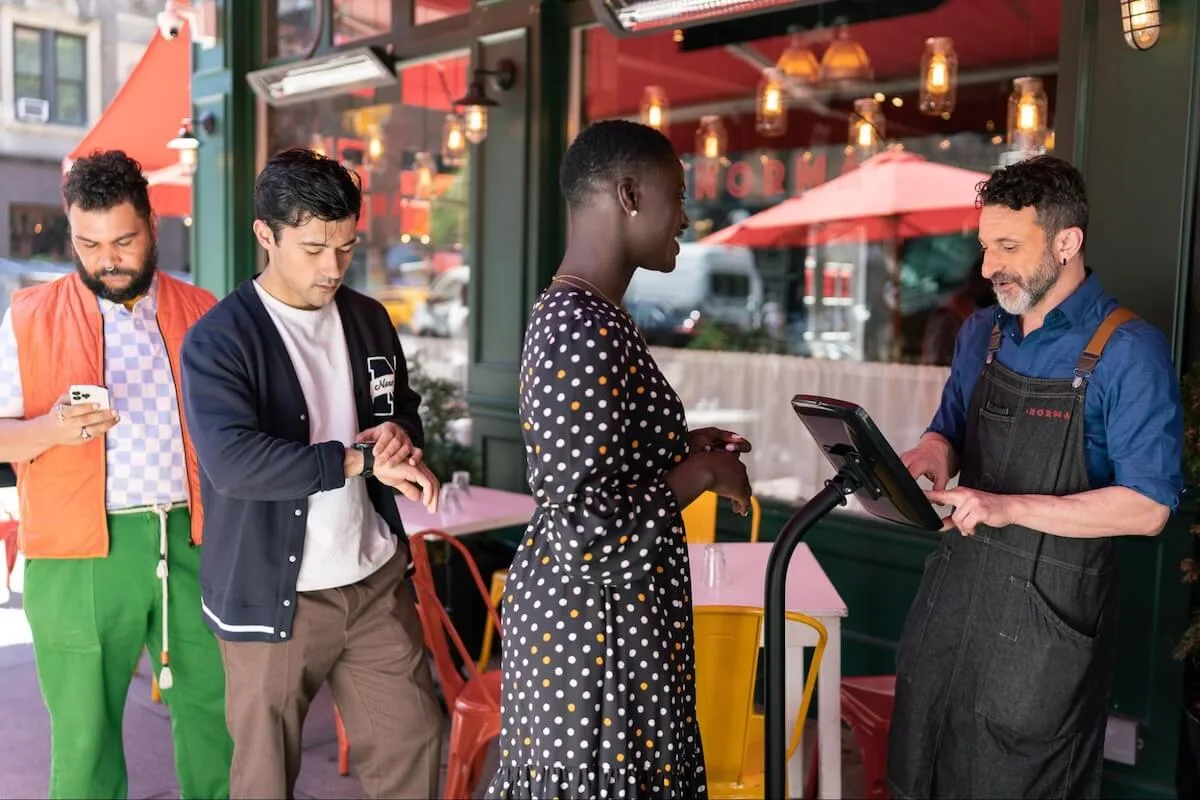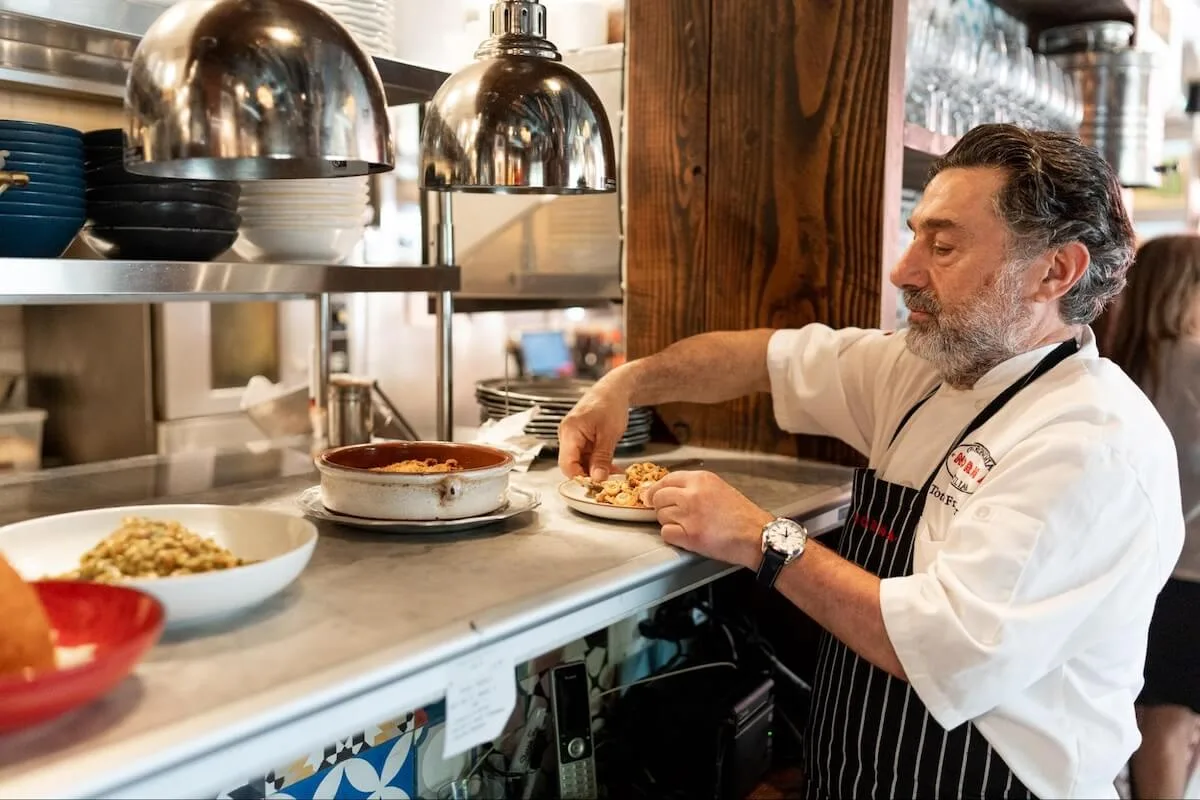Preparing Your Restaurant for 2025: Talent, Tech, and Teamwork
Skip the article and turn takeaways into action by scheduling a call with our team.
It’s hard to believe, but 2024 is already nearing its end. Another turn of the year provides a good opportunity for restaurant owners to take stock of the state of their establishments—their strengths, weaknesses, and future. “Onwards and upwards” is always a good motto for a business, but that “upwards” needs to be specifically defined, with clear goals set, so you have some direction toward your destination. With that in mind, let’s discuss preparing your restaurant for 2025.
Naturally, you want to increase sales and improve your overall bottom line. But focusing on numbers alone doesn’t work in a very human business like the restaurant industry. Although technology like artificial intelligence and other automations are crucial parts of new tech stacks, the human side must still be front and center in your business.
Here’s a deeper look at preparing your restaurant for 2025.
Set reasonable goals

The key here is “reasonable.” In many tech circles, it’s popular to think of 10x-ing a business, i.e., growing it by 10 times. That kind of business growth is certainly ambitious and sometimes doable in the tech world, but it’s rare in the restaurant business. So rather than thinking 10x, think about things you know you can do to improve your business in all its ways.
Setting goals that are too lofty can leave you feeling disappointed, whereas aiming for targets you know you can hit will keep you motivated and give your staff clear expectations without the dread of burnout.
Increase sales
There are many ways for restaurants to increase sales, but a good place to start, especially if your back-of-house isn’t already slammed, is with online ordering. Online food ordering for off-premises dining skyrocketed in popularity during the pandemic and the trend is set to stay. Expanding options for both delivery and takeout or pick-up orders is a clear path to increasing overall sales and diversifying revenue streams.
There are two ways to go about this: in-house ordering via your own website or app, or relying on third-party delivery services. It’s easier off the bat to use third-party delivery systems and get eyes on your menu items, but the services take a significant cut, often around 20%.
If your food cost percentage is low, this may not eat into your profit margin too much. But if you find you’re only breaking even on third-party deliveries, you may want to focus more on promoting your website or app.
Another path to increasing sales involves getting more customers in the door. Running promotions via social media, which we’ll discuss more later, is a solid plan. Consider your drink menu for ways to improve sales, as well—unique cocktails, wine pairings, or happy hours can encourage more traffic to your restaurant.
Naturally, you’ll want to keep regular customers and treat them well too. Consider opting for a loyalty program. These programs have become way more advanced than they used to be, but getting a custom loyalty program app built for your restaurant can offer a simple solution. Multiple companies offer bespoke programs for a monthly fee, so a custom app isn’t nearly as expensive as having a ground-up program built.
Improve the customer experience
Restaurateurs should always be looking for ways to improve the guest experience. The very beginning of a customer’s interaction with you leaves a lasting impression, whether it’s when they walk in the door or when they find your website online. If customers find that making reservations and joining waitlists is easy, that’ll be a huge plus to your image.
In-house experience involves a ton of factors, but there are some you can improve without much hassle:
- Make sure chairs are comfortable, clean, and in good shape.
- Update your artwork or décor if it seems dated.
- Know your audience and play fitting music at an appropriate volume. Don’t bore your diners with repetitive tunes; put thought into creating a unique playlist.
Improvements in customer service like contactless payments can take the frustration out of paying a bill. These new technologies can save time for your servers as well, allowing them to be more attentive to customers. Many customers will look to scan a QR code to pay via their banking app, so having a code available on the table will save time.
If you want to make changes based on what your customers would like to see, leave an anonymous survey on your tables. Customers can fill these out at the end of their dining experience and leave you their honest feedback. Listening to reasonable requests can yield good ideas that you may not have considered yet.
Retain top talent

Keeping good employees is one of the biggest challenges in the food service industry. Consistently high turnover rates mean potentially losing good staff. So it’s worth it to motivate your top performers to stay with you rather than jump ship for a better opportunity.
There are some simple ways to do this. The most straightforward is to provide raises and bonuses to top performers. Even ensuring employees know there’s a chance for promotion can improve morale. Employees who know they may move up are often more motivated and dedicated in their jobs. While it may not seem easy to offer higher pay, if you keep your labor costs at around 30% of your overall costs, you’ll be fine.
Other options include perks like staff food, flexible schedules, regular breaks, and vacation time. If you’re unsure what your employees need to feel like they’re being treated well and fairly, it’s wise to simply ask. Open communication between owners and staff can itself be a perk because employees feel heard and respected.
Boost sustainability
Sustainability isn’t just a trend or a buzzword—it’s a valuable goal for all restaurants. Limiting food waste is a good place to start, and inventory management can help solve that. If you’re regularly losing food due to expiration and rot, do a thorough inventory survey to see what goes bad most often. You can either reduce your inventory orders or nix menu items that aren’t selling well enough to use up their ingredients before they expire.
Similarly, if customers often don’t finish their meals, consider shrinking your portion sizes so you don’t have to throw out uneaten meals.
Finding locally sourced food is another way to boost sustainability, and it can lead to seasonal menus. Flying in asparagus from Peru when it’s out of season is unnecessary when there are plenty of fresh, in-season, local vegetables. Furthermore, switching to seasonal produce can help set you apart from other restaurants and give you a leg up in advertising. There’s a significant bonus here: 63% of millennials surveyed reported they’d be willing to pay more for sustainable products.
Cut down your tax burden
Taxes in the restaurant industry are complicated, we know. So we highly recommend checking out our article on essential tax deductions for restaurants to get the full scoop. You could end up saving more money than you expect via deductions. For example, labor costs, food costs, and advertising costs are all tax deductible—which can lead to significant savings if your bookkeeping is tight.
Develop partnerships
No restaurant exists in a bubble. As an end node of the supply chain, for example, restaurants form a crucial part of the economy. But the social aspect of running a restaurant is just as important as the economic side, and that includes partnerships with other local businesses.
Forming formal or informal alliances with other businesses creates a network effect—customers who are patrons at one business will get funneled to another that’s promoted. So keep your friends in mind: food suppliers, breweries, decorators, florists, furniture shops, and so on. Consider offering discounts to customers referred from your partners, developing a rewards program that covers multiple businesses, or running events at each others’ businesses, e.g., running a pop-up menu tasting event at a partner brewery.
Level up your tech

Restaurant technology is moving at blistering speed, and that’s a good thing. In-house tech like point-of-sale (POS) systems, front-of-house restaurant management systems, and back-of-house tech has significantly evolved in just a few years, as have customer-facing social media platforms. Staying on top of your tech game can give you a competitive edge in 2025.
In-house tech
Upgrading your in-house tech is one of the best ways to streamline restaurant operations. POS systems’ functionality are better than ever, allowing for quick payments, order inputs at the table via tablet, and much more. Paired with front-of-house systems like the Yelp for Restaurants software suite, servers, and managers have all the tools they need to make a customer’s dine-in experience pleasant and hassle-free.
FOH systems like Yelp Guest Manager sync seamlessly with third-party food delivery apps. Furthermore, they allow guests to make reservations and join waitlists at the push of a button. Data collected from service allows restaurateurs to hone in on the numbers and see all the specifics. It’s pretty neat.
Back-of-house tech has improved too. Screens in the kitchen display orders sent automatically from servers, allowing for greater accuracy and improved communications between staff.
Self-seating and self-service kiosks
Self-seating kiosks like Yelp Kiosk are steadily growing in popularity. They help take a lot of the burden off FOH staff by automating wait times, integrating reservations with walk-in customers, and generally handling a lot of what was formerly busywork for the host.
Fast food and fast casual restaurants can be well-served by self-service kiosks to help speed up the ordering process. Because the process is automated, the odds of a mistake happening are exceedingly low, keeping customers happy.
Social media
Social media has come a long way in recent years, and restaurants would be wise to keep up with current trends. Having a solid presence on social media apps like Instagram, TikTok, Facebook, and Yelp is a must. About 45% of customers have decided to try a restaurant based on its social media posts, so make sure you post regularly. Quick videos on TikTok or enticing photos on Instagram are a great way to show off your menu items and attract guests.
AI advertising
Advancements in AI are changing the face of all kinds of businesses—and the restaurant industry is one of those. Consider how a chatbot on your website or social media pages can answer questions for you, for example. Automating customer interactions like responding to standard questions about your hours, location, menu items, and more can save your staff a lot of time and improve customer satisfaction with real-time answers.
Naturally, AI is a boon to digital marketing. Creating images and short videos is easier than ever with many AI programs, and so is writing marketing copy. So look to ramp up your social media game and go rapid-fire with posts and advertisements.
AI parsing customer data
Using a data-driven approach to making new decisions is the way forward, but there’s so much customer data! Not to worry—sic your favorite AI tool on the vast amounts of data your FOH software captures and ask it specific questions to glean insight you might not have caught otherwise. What days do you sell the most cocktails? What menu items perform best in the winter? Pairing AI tools with this data can help you get down to the nuts and bolts of customer preferences that they might not even know.
Yelp Guest Manager to the rescue

We mentioned Yelp Guest Manager above in the tech section. It’s an all-round FOH platform that comes with all the bells and whistles restaurateurs need at a reasonable price and with no charge per cover. You’ll have access to fully customizable settings and a robust, hands-on onboarding process with a dedicated customer service manager, so front-of-house management is a breeze.
Curious if it’s right for you? 2025 is right around the corner, and we want to help you get excited for the new year. Reach out to us for a free demo and we’ll get started!